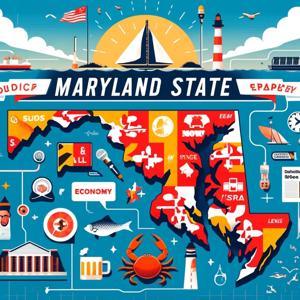Maryland finds itself at a critical juncture with significant developments across government, business, community affairs, and the environment. As the 2025 legislative session concluded earlier this week, Governor Wes Moore signed over 90 bills into law. These measures include updates to public safety systems, such as designating funds from the state’s 911 Trust Fund to support the 988 suicide prevention hotline, enhanced penalties for driving under the influence, and new protocols to assist victims of sexual violence. The session was largely shaped by a looming $3 billion budget deficit, which lawmakers addressed through tax adjustments, targeted spending cuts, and economic reforms. A $67 billion budget for 2026 aims to balance fiscal responsibility with progressive investments, such as record funding for education and infrastructure projects, while introducing new tax brackets for top earners—an issue that has sparked partisan debate.
On the economic front, Maryland has embarked on an ambitious growth strategy led by Governor Moore, focusing on high-growth industries like quantum computing, advanced manufacturing, and infrastructure development. The state has committed $750 million in investments to stimulate sectors of strategic importance. Notably, the Tradepoint Atlantic Terminal Container Project will drive substantial private investment and create union jobs, while Maryland’s partnership with IonQ aims to position the state as a global leader in quantum technology. These initiatives are expected to generate over $500 million in economic activity and create thousands of jobs, though they arrive at a time when economic pressures, including rising costs and housing challenges, remain acute.
In the community, efforts to bolster education and infrastructure were highlighted by the passage of the “Phone-Free Schools Pilot Program,” which seeks to evaluate the impact of limiting cell phone use in classrooms. Meanwhile, Maryland is addressing water scarcity concerns, as a prolonged drought has led to warnings across much of the state. Residents and businesses are urged to conserve water, especially in central and western counties, where groundwater levels remain critically low. On the coast, rising sea levels and more intense weather patterns further underscore Maryland’s vulnerability to climate change. The state is actively engaging in adaptation strategies, including upgraded stormwater systems and proactive water management efforts.
As Maryland navigates these challenges, community safety remains a priority. New criminal justice reforms and consumer protections aim to reduce crime and enhance support systems. The state also marked Spring Storms Awareness Week, emphasizing preparedness for severe weather as the season begins.
Looking ahead, Marylanders can anticipate ongoing efforts to mitigate the effects of climate change, implement legislative measures from the recent session, and monitor the economic impact of newly launched development projects. With critical debates on healthcare access, housing affordability, and environmental resilience likely to shape policy, the state’s trajectory will depend on balancing immediate needs with long-term sustainability.
This content was created in partnership and with the help of Artificial Intelligence AI








































